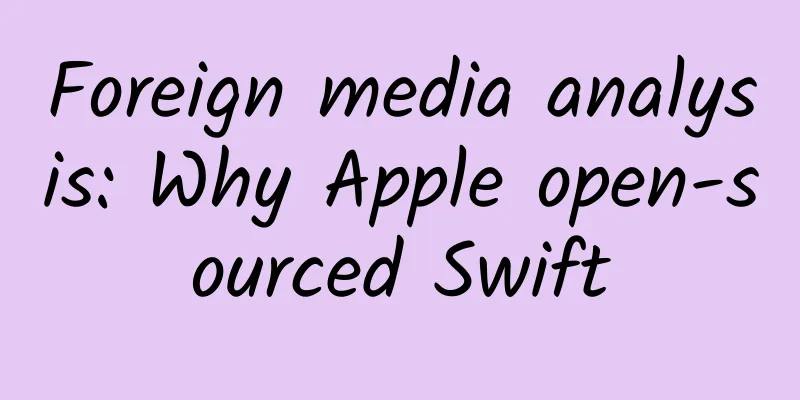Foreign media analysis: Why Apple open-sourced Swift

|
Apple's plans are indeed promising, but their main concern is to ensure that Swift attracts more developer support. At the just-concluded WWDC (Worldwide Developers Conference) 2015 conference, Apple announced that it would transform its first Swift programming language, the successor to Objective-C, into an open source project. The announcement comes alongside Swift 2, which includes even more new features designed to make development faster and easier, and will debut alongside the iOS 9 beta, which is now shipping to registered developers. "We believe Swift should be everywhere and available to everyone," said Craig Federighi, Apple's senior vice president of software engineering, during his keynote at WWDC. However, Federighi did not disclose specific details about how Swift will be transformed into an open source project. It is not clear whether Swift will be managed directly by Apple or led by an independent foundation. If history is any guide, Swift's management as an open source project should follow the same path as WebKit, another recent open source project owned by Apple, with Apple no doubt remaining the primary manager, while outsiders will be able to submit their own changes. The issue of opening up Swift quickly sparked heated debates on both sides. Open source has become the main and even objective way for most developers to participate in technology advancement, so Apple's move to open up its ecosystem is of course very practical - provided that it does not touch the control limit that Apple has always insisted on. (Microsoft has also begun to open its arms to open source.) Swift under the open source mechanism will be easier to port to multiple platforms, and in theory it can follow the same development trajectory as Python or Google Go. However, this situation is unlikely to happen: open source Swift will bring a large number of non-native libraries to iOS applications that are beyond the control of Apple. Obviously, the strict control of the iOS runtime environment is one of the fundamental means for Apple to ensure the end-user experience on its devices, and this restriction will probably exist for a long time on Swift. The real significance of open-sourcing Swift may be to attract external developers to the iOS camp by allowing them to use the language they are familiar with, rather than really allowing iOS applications to accept more external technical solutions in an open manner. |
<<: Xiaomi Content Report Card
>>: Developers' Notes: Hot Topics in Mobile Development in 2015
Recommend
How to build an IP brand in the protracted fight against the epidemic?
First of all, we must be prepared to coexist with...
The most comprehensive APP campus channel promotion strategy in history: 15 campus promotion methods, how many do you know?
1. Definition of Campus Channel When developing m...
The great design debate: Will being as cumbersome as WeChat become a mess?
From buying train tickets to finding a massage se...
If you are clear about these 4 points, you can boldly place elevator advertisements!
Probably starting from the end of 2018, it can be...
Breaking news! US District Court urgently stops WeChat from being removed from the platform
Late at night on September 20th, Beijing time, ac...
After four years of waiting, Apple finally fixed the issue of Siri searching for "abortion"
Shortly after the release of the iPhone 4S in 2011...
World Leprosy Day丨Preventable, curable and not scary!
January 29, 2023 The 70th World Leprosy Day The 3...
Spraying sunscreen spray all over the place, will it cause "white lungs"? Carcinogenic? Inflammable and explosive? Zundu fake~
Spraying sunscreen all over the body before going...
Li Xiaomeng's personal profile: SEO friendly link cheating, do you know about it, website owner?
Link cheating is a despicable behavior in SEO. Li...
Apple is deepening its presence in the automotive supply chain and may develop self-driving taxis
It’s no secret that Apple is focusing on the auto...
Practical strategies and methods for Tik Tok content operation and promotion!
The "2018 Douyin Big Data Report" relea...
Heavy rain! Red alerts issued in many places! How to prevent and respond to disastrous weather scientifically?
Heavy rain is coming! Since May 2, the heaviest r...
Will iPhone 8 be popular in China if it supports dual SIM cards?
According to TechRadar, the iPhone 8 that Apple wi...
In order to prevent the bird from being "reckless", do this now
Birds are the most common "animal neighbors&...
A large amount of metal was found in an ancient Roman shipwreck, and archaeologists and physicists are fighting over it...
In 1988, about 10 kilometers off the coast of Sar...









